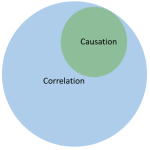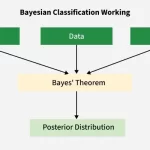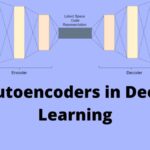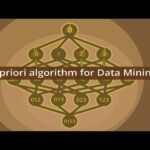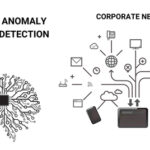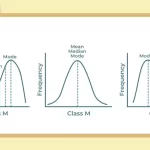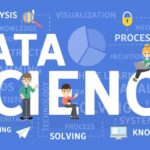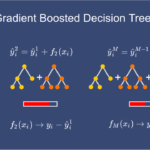Data Science
Data Science combines statistical analysis, machine learning, and domain expertise to extract meaningful insights from data. Explore the latest advancements, techniques, and applications in our Data Science blog posts below.
As a rapidly evolving field, Data Science is at the forefront of innovation in technology and business. From predictive modeling to natural language processing, data science techniques are transforming industries and driving new discoveries.
How does Data Science drive innovation and business growth?
Find the related blogs below to explore how Data Science drives innovation and business growth.
Related Blogs
- Causation and Correlation Explained: A Powerful Guide to Smarter Data Reasoning
 by Durgesh KekareData analysis often focuses on identifying relationships between variables. These relationships guide decisions in business, healthcare, public policy, and technology. However, misunderstanding relationships can lead to flawed conclusions. Distinguishing between association and cause is essential for accurate reasoning and responsible decision-making. Introduction to Causation and Correlation Causation and correlation describe different types of relationships between variables. While correlation measures association, causation implies a direct cause-and-effect relationship. Confusing the two is one of the most common analytical errors. Understanding this distinction is foundational for data literacy. What Is Correlation Correlation refers to a statistical relationship between two variables. When one variable… Read more: Causation and Correlation Explained: A Powerful Guide to Smarter Data Reasoning
by Durgesh KekareData analysis often focuses on identifying relationships between variables. These relationships guide decisions in business, healthcare, public policy, and technology. However, misunderstanding relationships can lead to flawed conclusions. Distinguishing between association and cause is essential for accurate reasoning and responsible decision-making. Introduction to Causation and Correlation Causation and correlation describe different types of relationships between variables. While correlation measures association, causation implies a direct cause-and-effect relationship. Confusing the two is one of the most common analytical errors. Understanding this distinction is foundational for data literacy. What Is Correlation Correlation refers to a statistical relationship between two variables. When one variable… Read more: Causation and Correlation Explained: A Powerful Guide to Smarter Data Reasoning - Bayes Classifier Explained: A Powerful Guide to Probabilistic Machine Learning
 by Durgesh KekareModern machine learning is not only about predicting outcomes but also about understanding uncertainty. Many real-world problems involve incomplete, noisy, or ambiguous information. Probabilistic models allow systems to reason under uncertainty. Instead of providing rigid predictions, they quantify likelihoods and confidence levels. This approach is particularly useful in domains such as healthcare, finance, and natural language processing. Foundations of Bayesian Reasoning Bayesian reasoning is based on updating beliefs as new evidence becomes available. It follows a simple idea: prior knowledge should be combined with observed data to make informed decisions. This philosophy contrasts with purely deterministic approaches. Bayesian methods continuously… Read more: Bayes Classifier Explained: A Powerful Guide to Probabilistic Machine Learning
by Durgesh KekareModern machine learning is not only about predicting outcomes but also about understanding uncertainty. Many real-world problems involve incomplete, noisy, or ambiguous information. Probabilistic models allow systems to reason under uncertainty. Instead of providing rigid predictions, they quantify likelihoods and confidence levels. This approach is particularly useful in domains such as healthcare, finance, and natural language processing. Foundations of Bayesian Reasoning Bayesian reasoning is based on updating beliefs as new evidence becomes available. It follows a simple idea: prior knowledge should be combined with observed data to make informed decisions. This philosophy contrasts with purely deterministic approaches. Bayesian methods continuously… Read more: Bayes Classifier Explained: A Powerful Guide to Probabilistic Machine Learning - Autoencoder Unleashed: A Powerful Guide to Modern Representation Learning
 by Durgesh KekareMachine learning systems are increasingly expected to extract structure from massive volumes of unlabeled data. In many real-world scenarios, manually engineered features are insufficient or impractical. Deep learning addresses this challenge through automatic representation learning, where models discover meaningful patterns without explicit supervision. One of the most foundational architectures enabling this capability is the autoencoder. Why Feature Learning Matters Raw data is often noisy, high-dimensional, and redundant. Learning compact representations improves: Feature learning allows systems to understand data rather than memorize it. What Is an Autoencoder An autoencoder is a neural network trained to reconstruct its own input. Instead of… Read more: Autoencoder Unleashed: A Powerful Guide to Modern Representation Learning
by Durgesh KekareMachine learning systems are increasingly expected to extract structure from massive volumes of unlabeled data. In many real-world scenarios, manually engineered features are insufficient or impractical. Deep learning addresses this challenge through automatic representation learning, where models discover meaningful patterns without explicit supervision. One of the most foundational architectures enabling this capability is the autoencoder. Why Feature Learning Matters Raw data is often noisy, high-dimensional, and redundant. Learning compact representations improves: Feature learning allows systems to understand data rather than memorize it. What Is an Autoencoder An autoencoder is a neural network trained to reconstruct its own input. Instead of… Read more: Autoencoder Unleashed: A Powerful Guide to Modern Representation Learning - Autocorrelation Decoded: A Powerful and Insightful Guide for Time Series Analysis
 by Durgesh KekareModern data rarely exists in isolation. Many datasets evolve gradually, influenced by past values and historical conditions. Examples include stock prices, daily temperature readings, website traffic, energy demand, and sensor-generated signals. These datasets share a common structure: time dependency. Understanding how present observations relate to past values is critical for building reliable analytical and predictive systems. Without acknowledging this structure, insights can become misleading and decisions unreliable. Why Time Dependency Changes Data Interpretation Traditional statistical models often assume independence between observations. Time-based data violates this assumption by nature. Ignoring temporal relationships can result in: This is why specialized time series… Read more: Autocorrelation Decoded: A Powerful and Insightful Guide for Time Series Analysis
by Durgesh KekareModern data rarely exists in isolation. Many datasets evolve gradually, influenced by past values and historical conditions. Examples include stock prices, daily temperature readings, website traffic, energy demand, and sensor-generated signals. These datasets share a common structure: time dependency. Understanding how present observations relate to past values is critical for building reliable analytical and predictive systems. Without acknowledging this structure, insights can become misleading and decisions unreliable. Why Time Dependency Changes Data Interpretation Traditional statistical models often assume independence between observations. Time-based data violates this assumption by nature. Ignoring temporal relationships can result in: This is why specialized time series… Read more: Autocorrelation Decoded: A Powerful and Insightful Guide for Time Series Analysis - AUC ROC Analysis Explained: A Powerful Guide to Reliable Machine Learning Evaluation
 by Durgesh KekareMachine learning models are only as valuable as their ability to make correct decisions. While building predictive models is a core activity, evaluating their performance accurately determines whether they can be trusted in real-world scenarios. Among the many evaluation metrics available today, AUC ROC analysis has emerged as one of the most widely accepted approaches for assessing classification models. The importance of proper evaluation becomes even more significant when models are used in high-stakes applications such as healthcare diagnostics, fraud detection, autonomous systems, and financial forecasting. This guide explores how AUC ROC analysis works, why it is preferred, and how… Read more: AUC ROC Analysis Explained: A Powerful Guide to Reliable Machine Learning Evaluation
by Durgesh KekareMachine learning models are only as valuable as their ability to make correct decisions. While building predictive models is a core activity, evaluating their performance accurately determines whether they can be trusted in real-world scenarios. Among the many evaluation metrics available today, AUC ROC analysis has emerged as one of the most widely accepted approaches for assessing classification models. The importance of proper evaluation becomes even more significant when models are used in high-stakes applications such as healthcare diagnostics, fraud detection, autonomous systems, and financial forecasting. This guide explores how AUC ROC analysis works, why it is preferred, and how… Read more: AUC ROC Analysis Explained: A Powerful Guide to Reliable Machine Learning Evaluation - Uncovering Hidden Insights with the Apriori Algorithm: A Powerful Guide for Modern Data Mining
 by Durgesh KekareUnderstanding patterns hidden inside data has become essential across industries. Today, businesses generate massive volumes of transactional and behavioral data each second. The ability to extract frequent patterns, associations, and relationships provides a competitive edge. One of the most influential techniques used for such pattern discovery is the apriori algorithm, which continues to power association rule mining even decades after its introduction. This guide explains how the apriori algorithm works, why it matters, how businesses use it in real time, and how you can implement it effectively. What Is the Apriori Algorithm? The apriori algorithm is a classical data mining… Read more: Uncovering Hidden Insights with the Apriori Algorithm: A Powerful Guide for Modern Data Mining
by Durgesh KekareUnderstanding patterns hidden inside data has become essential across industries. Today, businesses generate massive volumes of transactional and behavioral data each second. The ability to extract frequent patterns, associations, and relationships provides a competitive edge. One of the most influential techniques used for such pattern discovery is the apriori algorithm, which continues to power association rule mining even decades after its introduction. This guide explains how the apriori algorithm works, why it matters, how businesses use it in real time, and how you can implement it effectively. What Is the Apriori Algorithm? The apriori algorithm is a classical data mining… Read more: Uncovering Hidden Insights with the Apriori Algorithm: A Powerful Guide for Modern Data Mining - Powerful Anomaly Detection Algorithms for Intelligent Data Monitoring and Modern Automation
 by Durgesh KekareIn an era where organizations generate massive amounts of data every second, the ability to detect unusual patterns automatically is not just useful, it is essential. Businesses face threats like fraud activities, sudden spikes in network traffic, equipment failure, credit card misuse, unexpected medical readings, and sensor abnormalities. These irregularities, whether harmless or malicious, must be identified quickly to avoid financial loss, security gaps, or system downtime. That is where anomaly detection becomes critical. It helps detect abnormal behaviors in data streams, discover security breaches, predict breakdowns before they occur, and ensure operational reliability. Understanding the Need for Anomaly Detection… Read more: Powerful Anomaly Detection Algorithms for Intelligent Data Monitoring and Modern Automation
by Durgesh KekareIn an era where organizations generate massive amounts of data every second, the ability to detect unusual patterns automatically is not just useful, it is essential. Businesses face threats like fraud activities, sudden spikes in network traffic, equipment failure, credit card misuse, unexpected medical readings, and sensor abnormalities. These irregularities, whether harmless or malicious, must be identified quickly to avoid financial loss, security gaps, or system downtime. That is where anomaly detection becomes critical. It helps detect abnormal behaviors in data streams, discover security breaches, predict breakdowns before they occur, and ensure operational reliability. Understanding the Need for Anomaly Detection… Read more: Powerful Anomaly Detection Algorithms for Intelligent Data Monitoring and Modern Automation - An Introduction Statistical Learning With Central Tendency Concepts for Predictive Analytics & Machine Intelligence
 by Durgesh KekareBefore one begins with an introduction to statistical learning, the idea must be understood as a framework that combines statistics and machine learning to extract patterns from data. Because data today guides businesses, healthcare, finance, and every measurable industry domain, this discipline has grown into one of the strongest pillars of analytics. The key outcome is not simply building a model, but interpreting relationships and making decisions based on patterns. Statistical learning aims to predict outcomes and explain the relationship between variables. Why Statistical Learning Matters in the Modern Data World Organisations generate millions of data units each second. Without… Read more: An Introduction Statistical Learning With Central Tendency Concepts for Predictive Analytics & Machine Intelligence
by Durgesh KekareBefore one begins with an introduction to statistical learning, the idea must be understood as a framework that combines statistics and machine learning to extract patterns from data. Because data today guides businesses, healthcare, finance, and every measurable industry domain, this discipline has grown into one of the strongest pillars of analytics. The key outcome is not simply building a model, but interpreting relationships and making decisions based on patterns. Statistical learning aims to predict outcomes and explain the relationship between variables. Why Statistical Learning Matters in the Modern Data World Organisations generate millions of data units each second. Without… Read more: An Introduction Statistical Learning With Central Tendency Concepts for Predictive Analytics & Machine Intelligence - Can AI Truly Forget? The Technical Reality of Data Deletion in Machine Learning
 by Durgesh KekareArtificial intelligence (AI) is continually receiving training, absorbing new data to gain novel insights. What if information becomes out of date or irrelevant? Removing knowledge from an AI is a more complex process than many perceive, as it involves more than simply deleting data. Is it possible for an AI to genuinely forget information, especially when it leverages machine learning (ML) as a core training mechanism? The Reality of AI Data Storage and Why Forgetting Is Necessary The general public could perceive an AI as a fixed dataset. It becomes more intelligent as scientists inject more information into the well.… Read more: Can AI Truly Forget? The Technical Reality of Data Deletion in Machine Learning
by Durgesh KekareArtificial intelligence (AI) is continually receiving training, absorbing new data to gain novel insights. What if information becomes out of date or irrelevant? Removing knowledge from an AI is a more complex process than many perceive, as it involves more than simply deleting data. Is it possible for an AI to genuinely forget information, especially when it leverages machine learning (ML) as a core training mechanism? The Reality of AI Data Storage and Why Forgetting Is Necessary The general public could perceive an AI as a fixed dataset. It becomes more intelligent as scientists inject more information into the well.… Read more: Can AI Truly Forget? The Technical Reality of Data Deletion in Machine Learning - The Rise of Federated AI: Privacy-Preserving Machine Learning for the Modern Era
 by Durgesh KekareThe digital age marked the birth of cybercrime. Since then, there has been a massive uptick in cyberattacks, especially those launched by state-sponsored groups, third-party vendors and insider threats. Organizations are finding it increasingly difficult to anticipate and defend against these attacks. As the world enters the era of artificial intelligence, this poses a significant challenge. If attackers target the training dataset, they could exfiltrate personally identifiable information, proprietary data or medical records. Fortunately for AI engineers and users, the dawn of federated AI signals the end of these worries. Its privacy-preserving qualities address the core issue. What Is Federated… Read more: The Rise of Federated AI: Privacy-Preserving Machine Learning for the Modern Era
by Durgesh KekareThe digital age marked the birth of cybercrime. Since then, there has been a massive uptick in cyberattacks, especially those launched by state-sponsored groups, third-party vendors and insider threats. Organizations are finding it increasingly difficult to anticipate and defend against these attacks. As the world enters the era of artificial intelligence, this poses a significant challenge. If attackers target the training dataset, they could exfiltrate personally identifiable information, proprietary data or medical records. Fortunately for AI engineers and users, the dawn of federated AI signals the end of these worries. Its privacy-preserving qualities address the core issue. What Is Federated… Read more: The Rise of Federated AI: Privacy-Preserving Machine Learning for the Modern Era - Mastering Forecasting ARIMA Model: The Ultimate Power Guide for Accurate Predictions
 by Durgesh KekareIn modern analytics, generating reliable predictions from historical data is essential. Whether forecasting sales volume, demand, inventory, or other time-based metrics, one of the most enduring tools is the forecasting ARIMA model. This model provides a structured, statistical approach to time series forecasting, making it a cornerstone in many business and scientific applications. In this guide you will learn what a forecasting ARIMA model is, why it matters, how to build one from scratch, real-world examples, advanced variations, best practices and how to avoid common mistakes. What is a Forecasting ARIMA Model? The term forecasting ARIMA model refers to the… Read more: Mastering Forecasting ARIMA Model: The Ultimate Power Guide for Accurate Predictions
by Durgesh KekareIn modern analytics, generating reliable predictions from historical data is essential. Whether forecasting sales volume, demand, inventory, or other time-based metrics, one of the most enduring tools is the forecasting ARIMA model. This model provides a structured, statistical approach to time series forecasting, making it a cornerstone in many business and scientific applications. In this guide you will learn what a forecasting ARIMA model is, why it matters, how to build one from scratch, real-world examples, advanced variations, best practices and how to avoid common mistakes. What is a Forecasting ARIMA Model? The term forecasting ARIMA model refers to the… Read more: Mastering Forecasting ARIMA Model: The Ultimate Power Guide for Accurate Predictions - Mastering Data Scientist Tools: The Ultimate Power Guide for Modern Analysts
 by Durgesh KekareIn today’s data-driven world, data scientist tools form the backbone of every analytics operation. From cleaning raw data and building models to visualizing outcomes and deploying solutions into production, the right mix of tools can make the difference between stalled efforts and actionable intelligence. Defining Data Scientist Tools When we refer to data scientist tools, we mean the software, libraries, frameworks, platforms and utilities that enable data scientists to perform tasks such as data retrieval, cleaning, modelling, visualization, deployment and collaboration. These are distinct from hardware or infrastructure (though those matter too) and instead focus on the resources that drive… Read more: Mastering Data Scientist Tools: The Ultimate Power Guide for Modern Analysts
by Durgesh KekareIn today’s data-driven world, data scientist tools form the backbone of every analytics operation. From cleaning raw data and building models to visualizing outcomes and deploying solutions into production, the right mix of tools can make the difference between stalled efforts and actionable intelligence. Defining Data Scientist Tools When we refer to data scientist tools, we mean the software, libraries, frameworks, platforms and utilities that enable data scientists to perform tasks such as data retrieval, cleaning, modelling, visualization, deployment and collaboration. These are distinct from hardware or infrastructure (though those matter too) and instead focus on the resources that drive… Read more: Mastering Data Scientist Tools: The Ultimate Power Guide for Modern Analysts - Mastering Data Science Methods: A Complete Guide for Modern Analysts
 by Durgesh KekareIn the data-driven world, organizations rely heavily on data science methods to extract insights, make predictions, and optimize decision-making processes.From e-commerce to healthcare, finance to manufacturing, these methods form the backbone of intelligent analytics. Real-World Example: Amazon uses predictive analytics to optimize inventory management, while Netflix applies machine learning methods to enhance recommendation systems. What Are Data Science Methods? Data science methods refer to structured approaches and techniques used to analyze data, uncover patterns, and derive actionable insights.These methods encompass statistics, machine learning, data mining, and other computational approaches to process and analyze structured and unstructured data. Importance of Data… Read more: Mastering Data Science Methods: A Complete Guide for Modern Analysts
by Durgesh KekareIn the data-driven world, organizations rely heavily on data science methods to extract insights, make predictions, and optimize decision-making processes.From e-commerce to healthcare, finance to manufacturing, these methods form the backbone of intelligent analytics. Real-World Example: Amazon uses predictive analytics to optimize inventory management, while Netflix applies machine learning methods to enhance recommendation systems. What Are Data Science Methods? Data science methods refer to structured approaches and techniques used to analyze data, uncover patterns, and derive actionable insights.These methods encompass statistics, machine learning, data mining, and other computational approaches to process and analyze structured and unstructured data. Importance of Data… Read more: Mastering Data Science Methods: A Complete Guide for Modern Analysts - Mastering Data Science Languages: The Ultimate Guide for Modern Analysts
 by Durgesh KekareIn the rapidly evolving world of technology, data science languages form the foundation of every successful data-driven initiative. These languages allow analysts and developers to clean, process, analyze, and visualize massive datasets efficiently.Every business — from finance to healthcare, retail, and transportation — depends on these languages to uncover insights, predict trends, and make informed decisions. The global data analytics market, valued at over $300 billion, is expanding rapidly. This growth is directly linked to the rising demand for experts fluent in data science programming languages. What Are Data Science Languages? Data science languages are programming languages used to manipulate… Read more: Mastering Data Science Languages: The Ultimate Guide for Modern Analysts
by Durgesh KekareIn the rapidly evolving world of technology, data science languages form the foundation of every successful data-driven initiative. These languages allow analysts and developers to clean, process, analyze, and visualize massive datasets efficiently.Every business — from finance to healthcare, retail, and transportation — depends on these languages to uncover insights, predict trends, and make informed decisions. The global data analytics market, valued at over $300 billion, is expanding rapidly. This growth is directly linked to the rising demand for experts fluent in data science programming languages. What Are Data Science Languages? Data science languages are programming languages used to manipulate… Read more: Mastering Data Science Languages: The Ultimate Guide for Modern Analysts - Data Science Applications: Transforming Industries Through Intelligent Insights
 by Durgesh KekareIn a world where every click, purchase, and interaction generates digital footprints, Data Science Applications have become the backbone of intelligent decision-making. From predicting market trends to improving healthcare diagnostics, data science is redefining how organizations operate and innovate. The integration of data analytics, machine learning, and cloud computing has empowered businesses to extract meaningful patterns from raw data. This ability to transform massive datasets into actionable insights is now the key differentiator between industry leaders and laggards. What is Data Science? Data Science is an interdisciplinary field that uses algorithms, statistical models, and computational methods to analyze and interpret… Read more: Data Science Applications: Transforming Industries Through Intelligent Insights
by Durgesh KekareIn a world where every click, purchase, and interaction generates digital footprints, Data Science Applications have become the backbone of intelligent decision-making. From predicting market trends to improving healthcare diagnostics, data science is redefining how organizations operate and innovate. The integration of data analytics, machine learning, and cloud computing has empowered businesses to extract meaningful patterns from raw data. This ability to transform massive datasets into actionable insights is now the key differentiator between industry leaders and laggards. What is Data Science? Data Science is an interdisciplinary field that uses algorithms, statistical models, and computational methods to analyze and interpret… Read more: Data Science Applications: Transforming Industries Through Intelligent Insights - Big Data & Hadoop: The Ultimate Guide to Managing and Processing Large-Scale Data
 by Durgesh KekareIn today’s digital era, organizations generate an enormous amount of information every second. From social media interactions to IoT sensors, mobile devices, and e-commerce transactions — data is everywhere. This explosion of information has given rise to what we call Big Data. But managing and analyzing such vast data volumes is nearly impossible with traditional data processing systems. This is where Hadoop, an open-source framework by Apache, steps in. It provides a scalable and fault-tolerant system for storing and processing Big Data efficiently. The combination of Big Data & Hadoop has revolutionized how organizations store, process, and derive insights from… Read more: Big Data & Hadoop: The Ultimate Guide to Managing and Processing Large-Scale Data
by Durgesh KekareIn today’s digital era, organizations generate an enormous amount of information every second. From social media interactions to IoT sensors, mobile devices, and e-commerce transactions — data is everywhere. This explosion of information has given rise to what we call Big Data. But managing and analyzing such vast data volumes is nearly impossible with traditional data processing systems. This is where Hadoop, an open-source framework by Apache, steps in. It provides a scalable and fault-tolerant system for storing and processing Big Data efficiently. The combination of Big Data & Hadoop has revolutionized how organizations store, process, and derive insights from… Read more: Big Data & Hadoop: The Ultimate Guide to Managing and Processing Large-Scale Data - ANN Deep Learning: The Ultimate Guide to Artificial Neural Networks and Their Impact
 by Durgesh KekareIn recent years, deep learning has become one of the most revolutionary areas of artificial intelligence. Within this domain, Artificial Neural Networks (ANNs) form the foundation upon which most deep learning models are built. From recognizing images and understanding speech to generating music and analyzing financial trends, ANN deep learning has powered some of the most remarkable innovations in technology. This article will guide you through the core concepts, architecture, algorithms, and applications of Artificial Neural Networks, explaining how they mimic human brain functions to process data and make intelligent predictions. What is ANN in Deep Learning? Artificial Neural Networks… Read more: ANN Deep Learning: The Ultimate Guide to Artificial Neural Networks and Their Impact
by Durgesh KekareIn recent years, deep learning has become one of the most revolutionary areas of artificial intelligence. Within this domain, Artificial Neural Networks (ANNs) form the foundation upon which most deep learning models are built. From recognizing images and understanding speech to generating music and analyzing financial trends, ANN deep learning has powered some of the most remarkable innovations in technology. This article will guide you through the core concepts, architecture, algorithms, and applications of Artificial Neural Networks, explaining how they mimic human brain functions to process data and make intelligent predictions. What is ANN in Deep Learning? Artificial Neural Networks… Read more: ANN Deep Learning: The Ultimate Guide to Artificial Neural Networks and Their Impact - Bayesian Decision Theory: The Ultimate Guide to Smarter Probabilistic Decision-Making
 by Durgesh KekareEvery decision in data science involves uncertainty — from classifying a tumor as benign or malignant to deciding if a stock will rise or fall. In such uncertain environments, Bayesian Decision Theory stands as a guiding framework that allows us to make optimal decisions based on probability and prior knowledge. Unlike deterministic systems that rely purely on rules or thresholds, Bayesian methods combine prior information, observed data, and cost or reward functions to deliver mathematically sound, data-driven decisions. What is Bayesian Decision Theory? At its core, Bayesian Decision Theory is a fundamental statistical approach to decision-making under uncertainty. It integrates… Read more: Bayesian Decision Theory: The Ultimate Guide to Smarter Probabilistic Decision-Making
by Durgesh KekareEvery decision in data science involves uncertainty — from classifying a tumor as benign or malignant to deciding if a stock will rise or fall. In such uncertain environments, Bayesian Decision Theory stands as a guiding framework that allows us to make optimal decisions based on probability and prior knowledge. Unlike deterministic systems that rely purely on rules or thresholds, Bayesian methods combine prior information, observed data, and cost or reward functions to deliver mathematically sound, data-driven decisions. What is Bayesian Decision Theory? At its core, Bayesian Decision Theory is a fundamental statistical approach to decision-making under uncertainty. It integrates… Read more: Bayesian Decision Theory: The Ultimate Guide to Smarter Probabilistic Decision-Making - What is K-Means: The Ultimate Guide to Understanding Clustering in Machine Learning
 by Durgesh KekareIn the fast-evolving world of data science and machine learning, one algorithm consistently stands out for its simplicity and effectiveness — the K-Means Clustering Algorithm. But what exactly is K-Means? How does it work, and why is it such a popular choice among data scientists? If you’ve ever dealt with unsupervised learning or data segmentation, chances are you’ve encountered K-Means. It’s the go-to method for identifying patterns, groups, and insights hidden within raw data. In this comprehensive guide, we’ll unpack what is K-Means, how it works, its mathematical foundation, real-world applications, and why it’s still one of the most powerful… Read more: What is K-Means: The Ultimate Guide to Understanding Clustering in Machine Learning
by Durgesh KekareIn the fast-evolving world of data science and machine learning, one algorithm consistently stands out for its simplicity and effectiveness — the K-Means Clustering Algorithm. But what exactly is K-Means? How does it work, and why is it such a popular choice among data scientists? If you’ve ever dealt with unsupervised learning or data segmentation, chances are you’ve encountered K-Means. It’s the go-to method for identifying patterns, groups, and insights hidden within raw data. In this comprehensive guide, we’ll unpack what is K-Means, how it works, its mathematical foundation, real-world applications, and why it’s still one of the most powerful… Read more: What is K-Means: The Ultimate Guide to Understanding Clustering in Machine Learning - Gradient Boosting Decision Tree: The Ultimate Guide to High-Performance Models
 by Durgesh KekareWhen you want a model stronger than a single decision tree but more flexible than a simple linear model, Gradient Boosting Decision Tree (GBDT) shines. It builds an ensemble of weak learners (usually shallow trees) in a sequential way — each new tree is trained to correct the mistakes of the ensemble so far. Over the years, GBDT has become one of the most reliable and powerful tools for tabular data modeling. In this guide, we explore how GBDT works under the hood, how to tune it, and what real-world applications it shines in. We also cover advanced topics like… Read more: Gradient Boosting Decision Tree: The Ultimate Guide to High-Performance Models
by Durgesh KekareWhen you want a model stronger than a single decision tree but more flexible than a simple linear model, Gradient Boosting Decision Tree (GBDT) shines. It builds an ensemble of weak learners (usually shallow trees) in a sequential way — each new tree is trained to correct the mistakes of the ensemble so far. Over the years, GBDT has become one of the most reliable and powerful tools for tabular data modeling. In this guide, we explore how GBDT works under the hood, how to tune it, and what real-world applications it shines in. We also cover advanced topics like… Read more: Gradient Boosting Decision Tree: The Ultimate Guide to High-Performance Models

